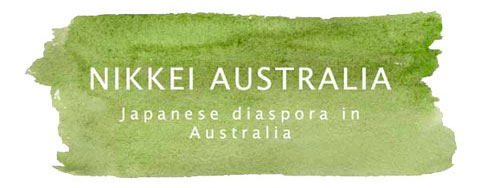6.1 Cowra POW Campsite Story 1 featuring Lawrance Ryan, Gordon Rolls
(Audio: 3 min 59 sec; 3.9MB)
Transcript:
[Lawrance Ryan]
Imagine the sounds that must have been coming out of this camp when it was in full operation. The Japanese playing baseball or sumo wrestling. The Italians doing all their craft activities. The Indonesian families with the children down in D Compound and the sounds coming out of there. Overall the experience from the Second World War with Cowra was that the military did provide for the town opportunities that didn’t exist in too many other places. And the camp being established in 41 and lasting through early 1947 did give Cowra an identity but also an income that sustained it during the Second World War. I’m Lawrance Ryan. I’ve been involved in the Cowra Japan relationship for at least the last 20 years and was for many years the President of the Cowra Breakout Association. It’s very hard to believe when you look out at the beautiful countryside here, 70 or more years ago, that this was the site of the only land battle fought on Australian soil during the Second World War. It’s also very hard to imagine what it must have been like when you had up to 5000 prisoners of war and 1000 Australian troops at the site. At the time there was a great fear of Japanese invasion of Australia. And as you look out over the beautiful rolling hills you can imagine what it must have been like back in those dark days of the Second World War.
[Gordon Rolls]
My name’s Gordon Rolls, President of the Cowra Breakout Association. My father Alfred James Rolls fired the first two shots just before the Japanese actually broke out of the camp. It was a signal of an alert of an incident going to happen. On the 5th August 1944, it was a bitterly cold night, there was a full moon and heavy frost. Dad was on duty in Broadway where the guards used to be. Somewhere between half past one and quarter to two, he noticed a Japanese prisoner come out of one of the huts, crouching to the ground, hiding in the shadows of the hut, crying out, trying to make himself to be understood, clutching a blanket with his hands above his head. And he came towards dad, and dad fired two shots in the air. And the Japanese prisoner climbed over the gate. And by this time the phone had rang in a little sentry box where dad was in Broadway. And the Lieutenant asked what was going on, and dad said, well I’ve got a Japanese prisoner here shivering, frightened. The Lieutenant and two quarter guards came down to where dad was, and they sort of looked into the camp, because it was just dead silence. And as they looked in, they saw the doors open and the Japanese came out of the huts in big mobs. They run onto the barbed wire fence in Broadway, threw blankets over it. They had baseball gloves on to protect themselves from the barbed wire. And the Lieutenant said, we’ve got three rifles, and four men and we’re outnumbered. We can’t do anything, so run for your lives. And as they shut those gates, the Japanese basically hit the gates at the same time. There were some younger quarter guards that were in the Broadway with him that night, and their opinion of it was that they could feel the Japanese breathing on the back of their necks. They said they ran down to get out, otherwise they would have been killed. Now the Japanese prisoner that was in Broadway, that came out to warn dad of the breaking out, obviously the strain was too great for him and he didn’t want to die. The Japanese people killed him. And that’s what happened there.
Producer/Sound Design: Masako Fukui
Music Credits: The Glasgow Reel performed by Graham Apthorpe and Peter Reeves
Impact Lento by Kevin MacLeod (incompetech.com) CC by 3.0
Sound Effect: Ueno Park Tokyo-Baseball Warm Up RTB45 (freesound.org) CC by 3.0
Photo Credits: Photo 1: Italian POWs making soap with fat and dripping from the POW camp kitchen, 1944; Photo by Geoffrey McInnes / AWM 064357
Photo 2: Japanese POWs attending the camp clothing parade, POW camp, 1944; AWM 067198
Photo 3: Blankets thrown over barbed wire fence by escaping Japanese POWs, 1944; Photo by George Pardey / AWM 073485

The Cowra Voices Audio Archive Project 2023
Cowra Council is the copyright holder of all the audio works in the Cowra Voices Audio Archive. If you would like to reuse or copy any of the materials in this Archive, please contact Cowra Council. Australian copyright law is set out in the Copyright Act 1968 (Commonwealth).
